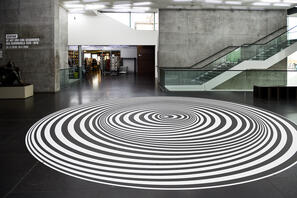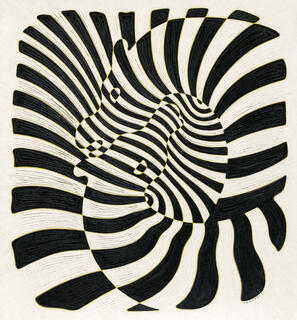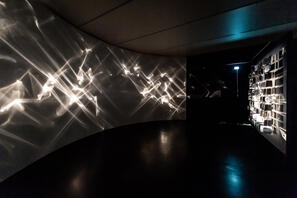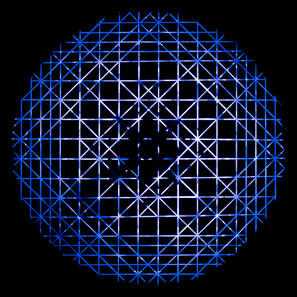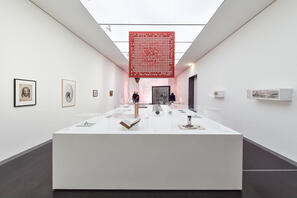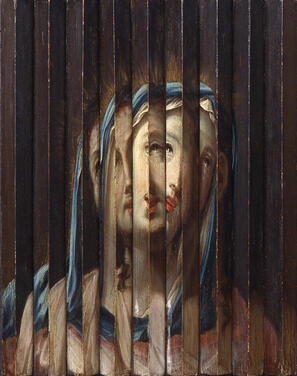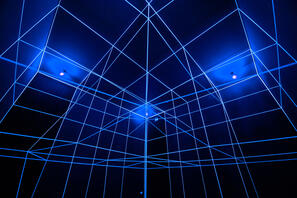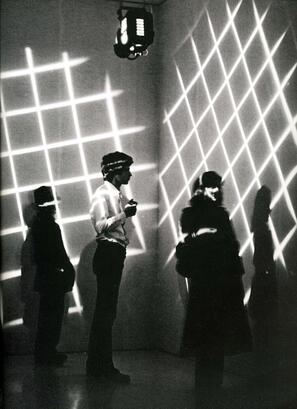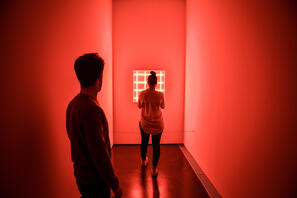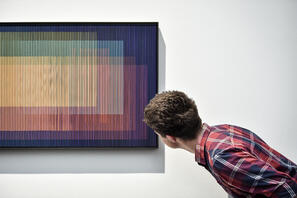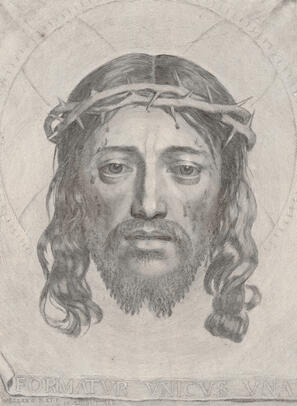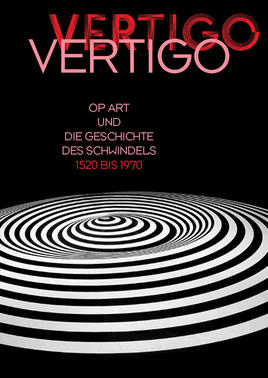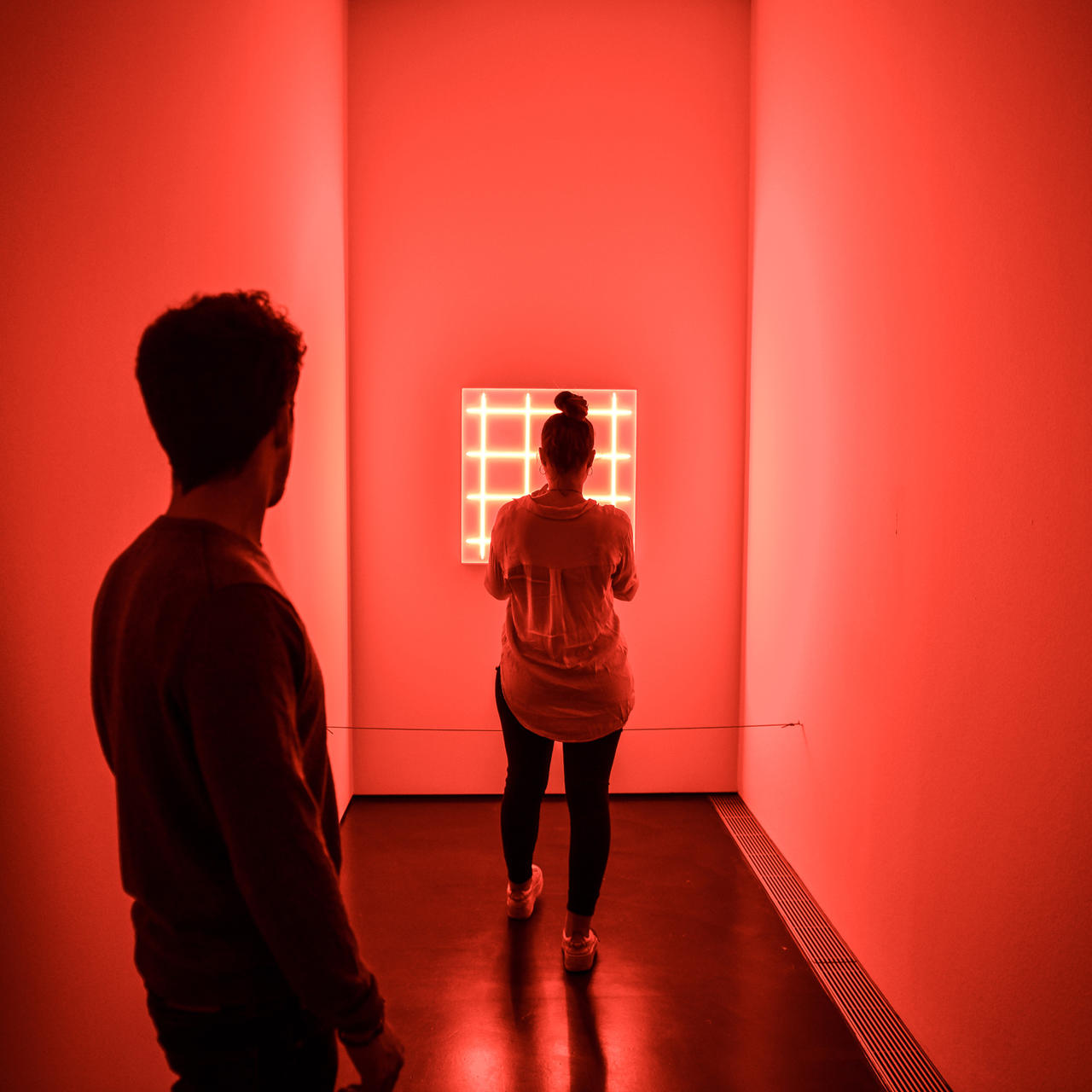
Vertigo. Op Art and a History of Deception 1520–1970
"Op Art: pictures that attack the eye"––this is how the art critic Jon Borgzinner described the new art trend in Time Magazine in 1964, which had developed as a European movement in various countries since the mid-1950s.
Op Art differs from traditional approaches of art in that it no longer transports content, but rather focuses on extreme impacts. Geometric, vibrating patterns, especially spirals, optical tilting effects, and grids distorted or superimposed into moirés are just some of the means and strategies that this art employs in images, objects, experience spaces, and films. As a space-expanding medium, light appears in a wide variety of forms. The artworks of Op Art aim at an overall physical experience, which may result in sensory, vertiginous overload. The title "Vertigo," borrowed from Alfred Hitchcock's famous 1958 film, refers to this aspect.
For the first time, the exhibition related Op Art to works of art from the 16th to 18th centuries in which similar practices of sensory manipulation play a role. Op Arts rejection of harmony and balance in favour of irritation, violent effects and deception corresponds to a change from the classical to the anti-classical––for which Mannerism stands as an epoch-spanning concept. Accordingly, "Vertigo" understood Op Art as a mannerism of the concrete art of the 20th century.
Curators Eva Badura-Triska (mumok), Eva-Marina Froitzheim (Kunstmuseum Stuttgart), Markus Wörgötter (freelance curator)
Curatorial Assistant Elisabeth Kuon
In cooperation with mumok – Museum moderner Kunst Stiftung Ludwig Wien
Sponsored by Trumpf
Previous station mumok (May 25 – October 26, 2019)
Artists
Josef Albers, Giovanni Anceschi, Richard Anuszkiewicz, Marina Apollonio, Alberto Biasi, Hartmut Böhm, Martha Boto, Gianni Colombo, Carlos Cruz-Diez, Dadamaino, Gabriele De Vecchi, Lucia di Luciano, Marcel Duchamp, Giovanni Galli-Bibiena, Gerhard von Graevenitz, Franco Grignani, Matthias Grünewald, Brion Gysin, Adolf Luther, Enzo Mari, Almir Mavignier, Francesco Mazzola gen. Parmigianino, Claude Mellan, François Morellet, Lew Nussberg, Ivan Picelj, Giovanni Battista Piranesi, Guido Reni (Umkreis), Vjenceslav Richter, Bridget Riley, Dieter Roth, Nicolas Schöffer, Erhard Schön, Jesús Raphael Soto, Aleksandar Srnec, Kerry Strand, Abbott Thayer, Grazia Varisco, Victor Vasarely, James Whitney, Ludwig Wilding a.o.
Catalog
Vertigo. Op Art and a History of Deception 1520–1970
Edited by Eva Badura-Triska and Markus Wörgötter, mumok – Museum moderner Kunst Stiftung Ludwig Wien
With forewords by Karola Kraus and Ulrike Groos, essays by Eva Badura-Triska, Eva-Marina Froitzheim, Sergius Kodera, Charissa N. Terranova and Markus Wörgötter
Softcover, 208 pages, English
Verlag der Buchhandlung Walther König
ISBN 978-3-902947-66-6
28 €
You can order the catalog bestellungen [at] kunstmuseum-stuttgart [dot] de (by mail) according to our terms and conditions. After placing your order an invoice will be sent to you. We will ship as soon as we receive your payment. Shipping costs within Germany: 4,90 €
